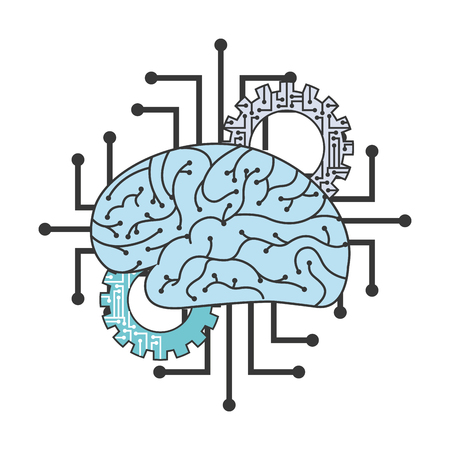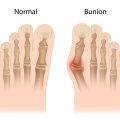1. Introduction to AAC and Its Impact in the U.S.
Augmentative and Alternative Communication (AAC) refers to a wide range of tools, strategies, and technologies that help individuals who have difficulty speaking or writing to communicate more effectively. In the United States, AAC plays a vital role in supporting people with various communication challenges, such as those resulting from autism, cerebral palsy, stroke, traumatic brain injury, or other conditions that impact speech. With advancements in technology, AAC has become more accessible and versatile than ever before.
What Is AAC?
AAC includes everything from simple picture boards to sophisticated electronic devices and cutting-edge apps. These tools can be used temporarily or for a lifetime, depending on the individuals needs. The main goal of AAC is to give everyone a voice, ensuring that people can share their thoughts, needs, and feelings regardless of their ability to speak.
Types of AAC
| Type | Examples |
|---|---|
| Unaided AAC | Sign language, gestures |
| Aided Low-Tech AAC | Picture boards, communication books |
| Aided High-Tech AAC | Speech-generating devices, tablets with AAC apps |
The Importance of AAC in American Settings
In both healthcare and educational settings across the U.S., AAC is essential for promoting equal opportunities and participation. Hospitals use AAC devices to help patients who cannot speak after surgery or injury communicate with doctors and family members. In schools, AAC supports students with disabilities so they can take part in classroom activities, interact with peers, and achieve their academic goals.
The Role of Technology in AAC
Recent technological advances have transformed how people access and use AAC. Today’s solutions include mobile apps designed for smartphones and tablets, advanced speech-generating devices, eye-tracking systems for hands-free control, and artificial intelligence that can predict words or phrases to speed up communication. These innovations make it easier for users to express themselves more naturally and independently.
Key Benefits of Modern AAC Solutions in the U.S.
- Enhanced independence for individuals with complex communication needs
- Greater inclusion in social, educational, and work environments
- Personalized options that fit diverse lifestyles and abilities
- Continuous improvement through ongoing tech development
AAC is not just about technology—it’s about helping people connect with others and live fuller lives. As we explore the latest advances in apps, devices, eye-tracking systems, and artificial intelligence throughout this article series, we’ll see how these tools are making a difference every day in America’s homes, schools, hospitals, and communities.
2. Mobile Apps Transforming Communication
Popular AAC Apps in the United States
Mobile apps have made a huge impact on Augmentative and Alternative Communication (AAC) for people with speech and language challenges. In the United States, families and clinicians use many AAC apps every day to help users express their needs, wants, and feelings more easily. Some of the most popular AAC apps include Proloquo2Go, TouchChat HD, LAMP Words for Life, and CoughDrop. These apps turn iPads and tablets into powerful communication tools that can be personalized for each user.
Customizable Features in AAC Apps
One big advantage of AAC apps is how much you can customize them. Many apps allow users or caregivers to change voice options, add new words or phrases, choose different languages, and adjust button sizes or colors for easier navigation. This flexibility means the app can grow and change along with the user’s needs over time.
| AAC App | Customizable Features | User Accessibility |
|---|---|---|
| Proloquo2Go | Personalized vocabulary, voice choices, button size adjustment | Easy navigation, symbol-based interface |
| TouchChat HD | Create custom pages, record personal messages, multiple voices | High contrast mode, switch access support |
| LAMP Words for Life | Flexible word mapping, adjustable icons, customizable grid size | Simplified layout for young users or beginners |
| CoughDrop | Add photos, set up reminders, track usage data | Cloud-based sharing between devices and team members |
User Accessibility: Meeting Everyones Needs
AAC apps are designed with accessibility in mind. They offer features like touch sensitivity adjustments for people with motor challenges, visual supports for those who need more contrast or larger buttons, and even auditory feedback for users who benefit from hearing their selections spoken aloud. Some apps can be used with switches or head-tracking technology if needed.
Integration Into Daily Life
In American homes and schools, these AAC apps are part of daily routines. Families use them during meals to ask about food choices or at bedtime to talk about the day. Teachers use them in classrooms so students can participate in group discussions or answer questions. Clinicians might program therapy goals into the app and review progress with parents. Thanks to mobile technology, communication support goes everywhere—at home, at school, on playgrounds, and even out shopping or traveling.

3. Breakthrough AAC Devices and Their Practical Use
Exploring the Latest Speech-Generating Devices
Speech-generating devices (SGDs) have come a long way, especially in the United States where diverse needs call for robust solutions. Today’s devices are more portable, customizable, and user-friendly than ever before. Brands like Tobii Dynavox, PRC-Saltillo, and Lingraphica offer devices that support both children and adults with a range of communication challenges, from autism to ALS.
Main Features of Modern SGDs
| Device Brand | Key Features | Best For |
|---|---|---|
| Tobii Dynavox I-Series | Eye-tracking, touch screen, symbol-based communication, cloud backup | Non-verbal users with physical disabilities |
| PRC Accent | Customizable vocabulary sets, switch access, robust hardware design | Users needing tailored language systems |
| Lingraphica TouchTalk | Lightweight tablet format, built-in therapy tools, easy navigation | Stroke survivors and those with aphasia |
Trends in Hardware Development for U.S. Users
The latest AAC hardware is designed with American users in mind—offering support for English and Spanish languages, compatibility with common insurance policies, and integration with mainstream tech like iPads. Accessibility features such as Bluetooth switch compatibility and environmental control units (ECUs) allow users to operate home devices or even play video games using their AAC system.
Why These Innovations Matter
- Diverse Communication: Devices now let users express emotions, ask questions, and join conversations in real time—at home or school.
- Cultural Relevance: Many systems include vocabulary sets featuring American idioms and region-specific slang to make interactions feel natural.
- User Independence: Eye-tracking technology enables hands-free operation for people with limited mobility.
- Family Involvement: Cloud-based data sharing helps therapists and families track progress together.
Practical Everyday Examples
An elementary student in California uses a speech-generating device with eye-tracking to answer questions in class. An adult living with ALS in Texas controls lights at home through their SGD’s environmental controls. These breakthrough devices empower people to connect, participate, and thrive in their communities.
4. The Power of Eye-Tracking Technology
What is Eye-Tracking in AAC?
Eye-tracking technology is one of the most exciting breakthroughs in the field of Augmentative and Alternative Communication (AAC). This system allows people to control computers, tablets, or communication devices just by moving their eyes. For many Americans with physical disabilities who can’t use their hands or speak, eye-tracking opens up a whole new world for connecting with others and expressing themselves.
How Does Eye-Tracking Work?
Eye-tracking uses special cameras and sensors to follow where a person is looking on a screen. When someone looks at a letter, word, or icon for a certain amount of time, the device selects it. This simple movement lets users type messages, surf the internet, or even play games—all hands-free!
Key Features of Eye-Tracking Technology
| Feature | Description | Benefits for Users |
|---|---|---|
| Hands-Free Control | No need for hand movement; only eye movements are required | Accessible for people with limited mobility |
| User-Friendly Interface | Large icons and adjustable settings for easy navigation | Makes learning and daily use easier |
| Customizable Options | Personalized layouts, voice choices, and sensitivity settings | Adaptable to individual needs and preferences |
| Integration with Other Devices | Works with computers, tablets, and AAC speech devices | Enables participation in school, work, and social life |
Who Can Benefit from Eye-Tracking?
This technology is especially helpful for Americans living with conditions like ALS (Lou Gehrig’s Disease), cerebral palsy, spinal cord injuries, and other physical disabilities. Anyone who has difficulty using traditional communication methods can benefit from eye-tracking as an alternative way to communicate independently.
Real-Life Success Stories in the U.S.
- Samantha’s Story: Samantha, a college student with cerebral palsy in California, uses an eye-tracking AAC device to take notes in class and join group discussions. It’s helped her keep up academically and socially.
- The Veterans’ Center: In Texas, veterans with spinal cord injuries use eye-tracking systems to connect with family members online and participate in virtual support groups—something that was once impossible for them.
- Elementary School Inclusion: A public school in Illinois provided an eye-tracking tablet to a young boy who cannot speak or write. He now shares his thoughts with classmates during lessons and activities.
The Growing Impact Across America
As this technology becomes more affordable and available, more Americans are discovering the freedom and independence that eye-tracking can provide. With ongoing advances in apps and devices tailored to American users’ needs, eye-tracking is quickly becoming a mainstream tool for accessible communication across schools, homes, workplaces, and communities.
5. Artificial Intelligence: Shaping the Future of AAC
How AI is Transforming AAC for All Americans
Artificial Intelligence (AI) is making a big impact on Augmentative and Alternative Communication (AAC). With new smart technologies, people with speech and language challenges can express themselves more easily and naturally. Lets take a closer look at how AI is opening new doors for communication across diverse American communities.
AI-Powered Predictive Text
One way AI helps is by predicting what users want to say next. This means people dont have to type every single word. The system learns from their habits and favorite phrases, making conversations faster and less tiring. For example, if someone often says “Good morning,” the device can suggest it after just typing “G”. This makes everyday interactions—like ordering coffee or chatting with friends—much smoother.
Voice Synthesis: Personalized and Natural Speech
AI has also improved voice synthesis. Users can now choose voices that sound more natural, match their age, gender, or even regional accents. This helps them feel more included and confident when communicating in public or social settings. Its especially important in the U.S., where people come from many backgrounds and value individuality.
Smart Communication Partners
Some advanced AAC devices use AI as a “smart partner” during conversations. These systems can adjust to the user’s needs, offer suggestions, and even understand context. For instance, if someone is talking about going to a baseball game, the device might suggest related words like “ticket,” “stadium,” or “hot dog.” This makes communication more engaging and meaningful.
Examples of AI Features in Modern AAC
| Feature | How It Helps Users | Cultural Benefit in America |
|---|---|---|
| Predictive Text | Saves time, reduces fatigue | Makes fast-paced conversations easier for everyone |
| Personalized Voices | Makes speech sound unique and authentic | Reflects America’s diversity and personal identity |
| Context Awareness | Smooths out group chats or complex discussions | Helps users join community events or school activities confidently |
| Learning User Preferences | Tailors suggestions to individual routines and slang | Keeps up with regional language trends across the U.S. |
The Impact on Inclusion and Autonomy
AI-driven AAC tools empower users to take charge of their conversations. They help break down barriers at work, school, or in public places—making it possible for people with communication challenges to be heard and understood everywhere in America. Thanks to these innovations, more individuals can connect with others, share their stories, and become active members of their communities.


